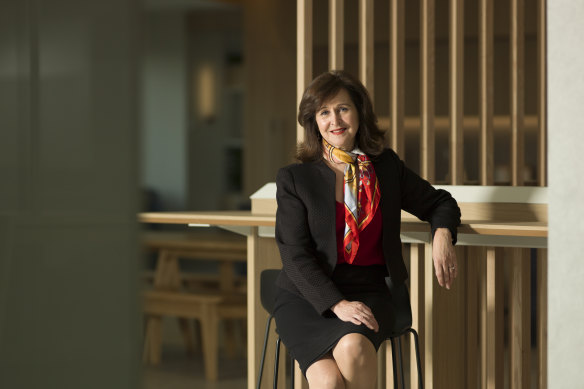This was published 10 months ago
Opinion
What does it mean to be retirement ready?
Bec Wilson
Money contributorAs you get closer to retirement, you might wonder what being “retirement ready” means. The term gets thrown around a lot, but there’s not always a clear definition.
The government wants super funds to take more responsibility for the retirement readiness of their members. Some funds agree this is important, while others believe it’s up to the individual to ensure they’re ready.
Meanwhile, most people don’t even know what the term means, and it probably means different things to different people.

We all need to understand what retirement ready means and how we get there.Credit: iStock
So when HESTA reached out to me this week, celebrating the fact that they’ve set up a model to measure the retirement readiness of their members, my ears pricked up.
According to their in-house model, they’ve seen about 200,000 people – roughly one-fifth of their members – improve their retirement outlook over the past seven years, moving from a projected “modest” to “comfortable” retirement.
I wanted to dig deeper. If retirement readiness is going to become a key metric, we all need to understand what it means and how we get there.
HESTA CEO Debby Blakey summed it up perfectly: “If we measure retirement readiness and report on it, we can ultimately improve it significantly.”
But here’s the catch – members still need to do some of the heavy lifting.
Defining retirement readiness
If we want to measure and improve our retirement readiness, we need to have a clear goal. Each fund may have a different target depending on their members. And every individual will have a different “number” that defines readiness to them. That’s the first hurdle for most people. Goal-setting for a new phase of life is hard.
HESTA, for instance, is a large industry super fund serving many of Australia’s nurses and healthcare workers, with nearly 80 per cent of their members being women. Many of these members have lower-than-average super balances because they’ve taken career breaks and earn lower wages – frankly, healthcare workers are underpaid. It’s not an easy starting point, but HESTA is aiming to get as many members as possible to a “comfortable” retirement.
Their model’s goal is based on the ASFA Retirement Standard, which suggests that a couple needs around $690,000 in super for a comfortable retirement, while singles need $595,000—assuming homeownership. For a modest retirement, that figure is much lower, around $100,000 in super.
HESTA’s approach is to assess where their members stand compared to these benchmarks and then work on ways to help them improve.
“But of course, it’s also about members taking action—using good tools and making smart decisions to become retirement ready,” she added.
Bingo! — the answer I was looking for. It comes down to members being proactive. Most comfortable retirements don’t happen by chance; they’re built by taking small, smart steps consistently over time. The best thing any super fund can do is educate you on what those steps are, give you the tools, offer you the good investment returns and keep nudging and supporting you to take action.

HESTA chief executive Debby Blakey: We can improve retirement readiness significantly.Credit: Elke Meitzel
Taking control – becoming retirement ready
What are the levers for retirement readiness if you want to take charge yourself? Here are the ones I think you should start with.
Check you’re getting strong long-term investment returns on your super
Your superannuation is likely to be one of your main income sources in retirement. Make sure you’re familiar with how much you have, whether it is appropriately invested and how much that is projected to become when you retire.
Consider extra contributions to super from as early in life as possible
Then, if you’re not already doing so, consider making extra contributions to your super fund. HESTA saw a significant increase in members contributing more to their super from 2016 to 2024 and pointed out that this was one of the biggest reasons that people’s retirement readiness rating improved. These extra contributions, even small ones, can significantly boost your savings over time, thanks to the power of compounding returns.
Look for tools, help and guidance from your fund – check what you’re paying for and use it
Take a moment to compare what the administration costs are on your fund and explore the services and online tools you can use to help yourself plan for retirement. Some funds are offering online planning and projection tools; some provide financial advice at no extra cost, others are offering education programs and webinars for members. You can make yourself more retirement ready by using them. You’re probably paying for them anyway.
Create a budget you can live on and save on
Work out what your living expenses will be in the years before retirement when you’re saving, and the years after retirement when you’re dependent on a passive income. Include everything – from daily costs such as groceries and utilities to larger expenses such as travel or hobbies. When you establish a realistic budget, you’ll be able to see how well your savings and super can meet your needs.
Try retirement on for size
Confidence is a big issue for people as they enter retirement, and the best way to work on confidence is by practising. If you’re unsure whether you’re truly ready for full retirement, you could try easing into it with part-time work or a gradual reduction in hours. This can help you adjust to a different pace of life and give you time to test your financial readiness. Or you could simply try living on your retirement budget for a month and seeing how it feels.
As thrilled as I am with HESTA’s progress, there’s ultimately not much your super fund can do for you if you’re not interested. They need to work with you to move your retirement readiness. I can’t see it working any other way. So don’t sit back and relax – lean into your superannuation and make it epic.
- Advice given in this article is general in nature and is not intended to influence readers’ decisions about investing or financial products. They should always seek their own professional advice that takes into account their own personal circumstances before making any financial decisions.
Expert tips on how to save, invest and make the most of your money delivered to your inbox every Sunday. Sign up for our Real Money newsletter.